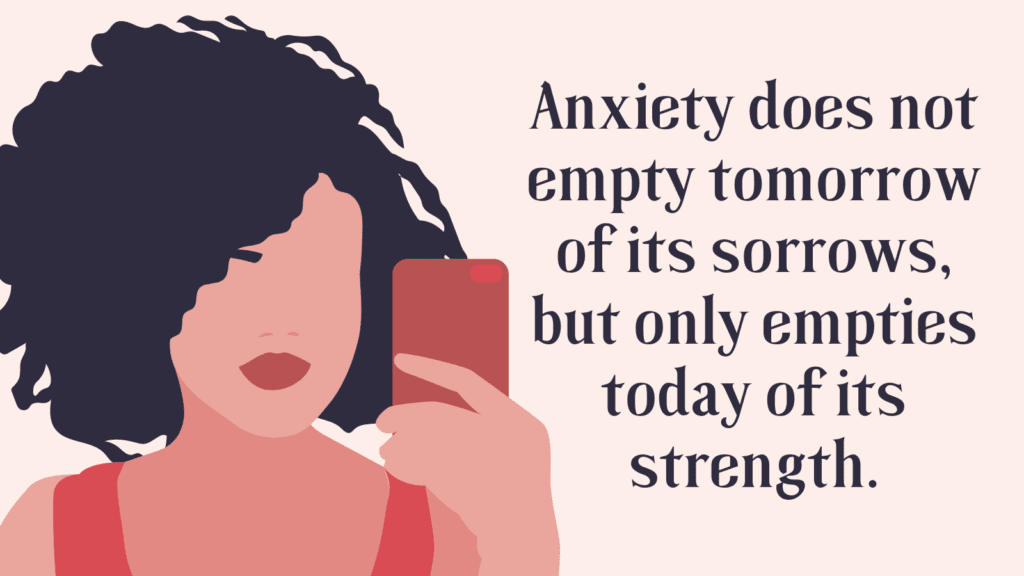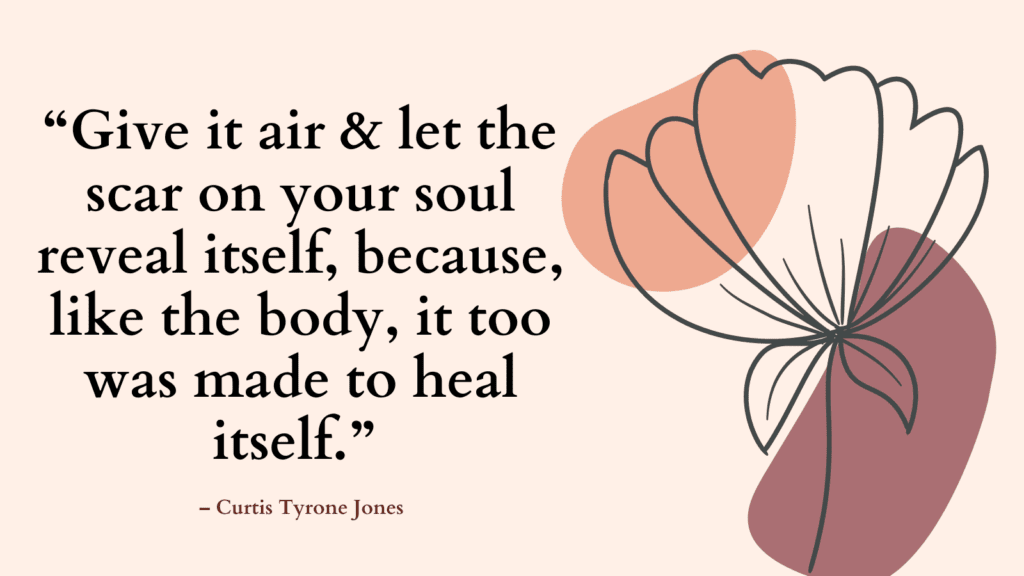Today, you’re going to learn all about living with generalized anxiety disorder and how to use Cognitive Behavioral Therapy CBT exercises for anxiety relief.
Generalized anxiety disorder (or GAD) is characterized by excessive, exaggerated anxiety and worry about almost everything for no particular reason.
People with symptoms of generalized anxiety disorder tend to engage in unhelpful thinking styles, such as catastrophizing and always expecting the worst.
This is where CBT comes into play.
The guiding principle behind Cognitive-Behavioral Therapy (CBT) is that our thoughts determine our feelings and behaviors. By gaining better control over your thoughts, you’ll be able to change your feelings and behavior.
- What Is Anxiety?
- Functional Vs. Dysfunctional Anxiety
- Generalized Anxiety Disorder Relief: Cognitive-Behavioral Therapy CBT
- FREE CBT Worksheets For Anxiety PDF
- Top 10 Practical CBT Exercises For Anxiety Relief
- Before You Start
- 1. Regulating Your Automatic Nervous System
- 2. Reframing Your Negative Thoughts
- 3. Gradual Exposure
- Bonus Tip. Natural Remedies For Generalized Anxiety Disorder
- Conclusion
- FAQ
What Is Anxiety?
Anxiety is the feeling of uneasiness a person feels about a certain person, place, object or situation. It can be experienced in the form of fear or worry.
It’s a common feeling everyone experiences at a certain point in his life. However, some people develop certain kinds of anxiety disorders that cause negative feelings, and extreme and irrational behavioral responses.
Related: Anxiety Free Resources
There are six major forms of anxiety disorders:
- Generalized Anxiety Disorder (GAD)
- Social Anxiety
- Specific phobias
- Panic Disorder
- Obsessive-Compulsive Disorder
- Post-Traumatic Stress Disorder
Each of these forms of anxiety is triggered and addressed differently. (*)
Cognitive-Behavioral Therapy (CBT) is the preferred psychosocial intervention for most of them.
Related: Anxiety Relief: How to Treat Anxious Symptoms and Thoughts Effectively?
Functional Vs. Dysfunctional Anxiety
Anxiety is a normal human emotion.
There are many times when it is perfectly natural that we feel anxious, such as giving a presentation at work, learning how to drive a car, talking to someone we’re attracted to, etc.
This kind of anxiety isn’t just normal, it’s also functional. Feeling anxious as the exams draw close can motivate you to study harder.
The question here is and when does anxiety stop serving its purpose and become a disorder?
Function anxiety is generally connected to a specific situation. For example, you may feel anxious about an upcoming exam, but once it’s over, the anxiety dissipates.
Dysfunctional anxiety, on the other hand:
* Is not connected to a specific trigger or situation
* Is not time limited.
* Can be much more intense than a typical anxiety response, and may even lead to a panic attack.
* Is interfering with your life in some way (e.g. your ability to perform at work, your ability to engage in social activities, etc.)
Living With Generalized Anxiety Disorder: What’s Generalized Anxiety Disorder (GAD)?
Generalized Anxiety Disorder (GAD) is one of the most common anxiety disorders.
The individual who has GAD, usually, sufferers from excessive worry about almost everything for no particular reason or cause – be it their health, family, friends, professional life, financial status. (*)
How Do You Know You Have Generalized Anxiety Disorder?
Some of the most common symptoms of GAD include:
- Excessive worry or tension,
- Tiredness,
- Restlessness,
- Sleeping difficulties,
- Headaches,
- Mood swings,
- Concentrating difficulties, and
- Nausea.
How Generalized Anxiety Disorder Affects Life?
People who suffer from GAD are constantly worried that something bad will happen, they see things from a negative point of view, and they expect the worst case scenario about almost everything.
This makes it difficult for someone to lead a happy and fulfilling life.
Generalized Anxiety Disorder Relief: Cognitive-Behavioral Therapy CBT
Anxiety medication for generalized anxiety disorder is not the only option.
CBT is one of the most popular kinds of therapy available to us right now. This is mostly due to its easy application and simple techniques.
It targets our negative ways of thinking which are distorting our attitudes towards ourselves and the world around us, and corrects them to help us become emotionally and mentally balanced.
Even though it won’t rid you of depression or cure your mental illness completely and permanently, it can do a lot to make it more manageable and improve your overall life quality. (*)
FREE CBT Worksheets For Anxiety PDF
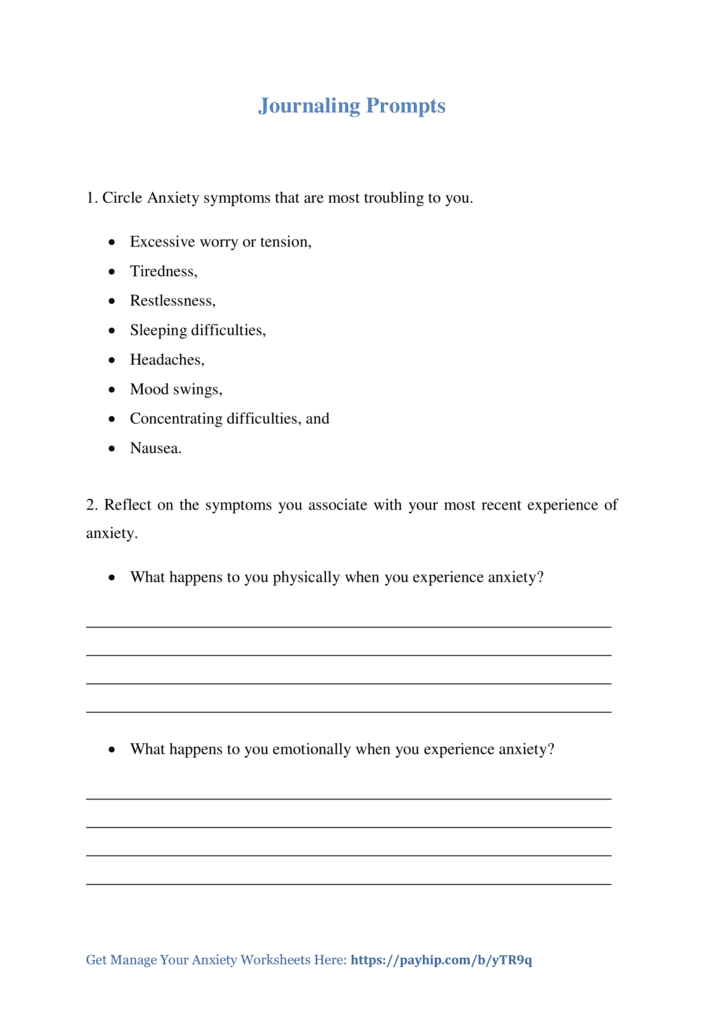
Top 10 Practical CBT Exercises For Anxiety Relief
Before You Start
1. Embrace change and the discomfort that comes with it
CBT is about creating positive change in your life through reframing your mindset. Sometimes change can be hard, uncomfortable and even painful but it’s a crucial part of healing. Trust in the process and keep in mind that sometimes, things get worse before they get better.
2. Set a deadline for yourself
Setting deadlines for your goals makes you more committed to getting better through CBT.
3. Allow yourself to be emotionally vulnerable
It can be scary to admit that you have a problem or even think about it. But unless you allow yourself to be emotionally vulnerable and completely honest, CBT won’t offer you much.
Take the time to ponder on what your problems are which of your thoughts, feelings, and behaviors are dysfunctional.

1. Regulating Your Automatic Nervous System
#1. Yoga
Yoga help individuals who have GAD relieve their muscle tension.
Studies show that yoga helps lower a person’s stress and relax their muscles. Sign up for a yoga class or do it at home.
If you choose to do it at home, do it in the afternoon or at the end of the day to help you decompress. Play some relaxing music and breathe deeply. Choose which poses you want to perform and take your time through all the movements.
Most importantly, keep your mind clear and enjoy yourself.
#2. Breathing exercises
Breathing exercises is a good practice when you start to feel yourself getting anxious.
- Breathe as deep down into your belly as is comfortable.
- Breathing in through your nose and out through your mouth.
- Some people find it helpful to count steadily from 1 to 5.
- Then, without holding your breath, breathe out gently, counting from 1 to 5 again.
- Keep doing this for 3 to 5 minutes.
Apps like Prana Breath, MindShift CBT, Breath Ball, and Health through Breath can help make breathing exercises easier.
#3. Progressive Muscle Relaxation (PMR)
This technique could be done along with deep breathing exercises to help you release the built-up tension within your muscles and help you relax. (*)
* Choose a quiet room.
* Remove tight clothing or items that may cause you uneasiness.
* Remove tight clothing or items that may cause you uneasiness.
* Sit in a comfortable position.
* Take deep, slow breaths.
* Pay attention to all your muscles. Start with your face muscles. Clench your muscles as you inhale and feel your face muscles as you exhale.
* Repeat twice before moving on to other areas like arms, shoulders, chest, stomach, back, legs, feet.
#4. Meditation for Anxiety
Meditation help individuals who have GAD stop over-thinking and emotional turmoil.
Here’s how you can do it:
1. Choose some guided meditation videos from YouTube or an app.
2. Choose which time of the day is best for you, and do it on a regular basis, preferably every day.
3. Find a quiet place where you can be alone and away from distractions.
4. Devote all your attention to these mediations and forget about everything else going on in your life.
#5. Mindfulness Meditation
Mindfulness meditation allows individuals to calm their minds while also focusing on the present moment.
This can be done by following these steps:
1. Sit in a comfortable position and breathe deeply.
2. Notice how your body feels as you breathe in and out. Pay attention to everything that is happening to your body in this moment.
3. Start redirecting your attention toward what’s happening around you (like the sounds around you or even the thoughts running through your mind) without assessing if it’s positive or negative.
This helps you remain calm while reflecting on your thoughts and understanding what’s going on inside your body.
#6. Positive Affirmations
Repeat positive affirmations in your mind. The following are some example:
- I am strong and powerful.
- I am growing stronger and healthier.
- I believe in myself. I can overcome this.
- This will pass and I’ll be okay again.
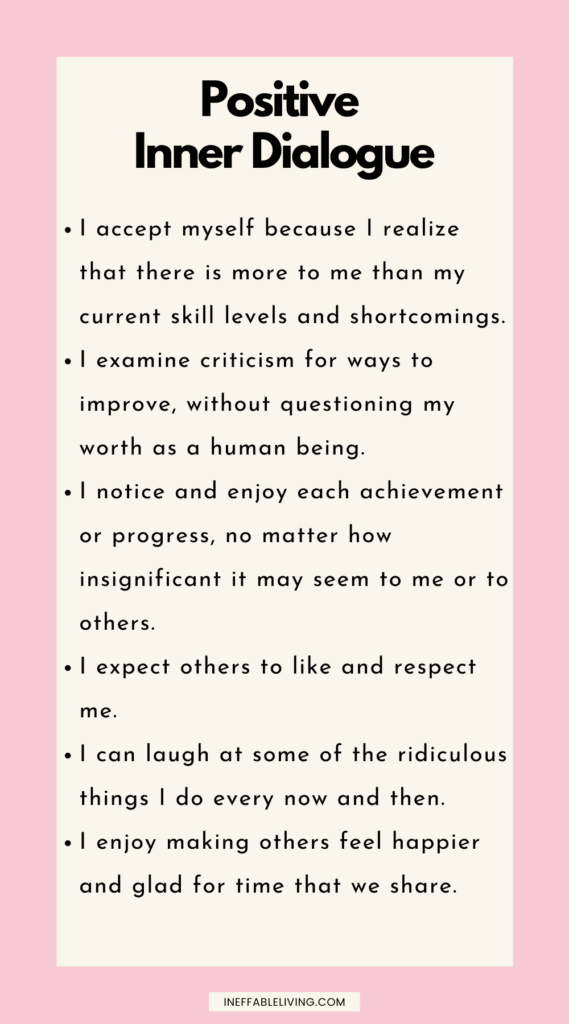
2. Reframing Your Negative Thoughts
How Your Thinking May Be Contributing to Your Anxiety?
There is always a trigger for our emotions.
Most of the time, the situation itself is not the trigger. Rather it is the way we interpret or think about the situation that triggers our emotions.
#7. Become Aware of Your Anxious Thoughts
1. Stop for a moment, and mindfully, assess the current situation you’re faced with and describe it to yourself – how it make you feel and identify those feelings.
2. Become aware of your “negative automatic thoughts”. Go through a certain interaction and identify the first few thoughts that pop into your head. These are your “automatic thoughts”.
3. Write down your anxious thoughts for closer examination.
#8. Tackling Your Thoughts
Thoughts profoundly affect emotions and feelings in addition to behavior. By changing unhelpful, inaccurate thoughts, you can alleviate your anxiety and emotional distress.
Begin tackling these thoughts by doing to the following:
1. Search for evidence
Examine your thoughts objectively and go through the facts.
Use the following questions to search for evidence:
Have I had thoughts like these at other times in my life? Have my dire predictions come true?
1. Do I have experiences that would contradict my thoughts in any way?
2. What evidence do I have that what I believe is actually true?
3. Am I falling into a thinking trap (e.g., catastrophizing or all-or-nothing treatment)?
4. What would I tell a friend if he/she had the same thought?
5. Am I confusing a thought with a fact?
6. Am I basing my conclusion mostly on my feelings or on the true evidence?
While feelings are valid, they’re not evidence for supporting anxious thoughts. If, for example, you feel extremely anxious about doing a job interview, the anxiety is not evidence of how you will perform.
2. Rethink the risk
When you feel anxious, it’s easy to overestimate the odds of unwanted consequences actually occurring. Because disasters grab attention, we tend to focus on negative events, rather than positive ones.
That’s why you need to do a reality test and try to think about the real, objective odds of your predicted disaster.
Use the following questions to reassess the risk:
1. How many times have I predicted this outcome, and how many times has it actually happened?
2. How often does this happen to other people?
3. If a dear friend made this prediction, would I agree?
4. Am I assuming this will happen just because I’m feeling anxious, or is there a reasonable chance that it will really happen?
3. Imagine the worst-case scenarios
Even after searching for evidence and reassessing the risk, you might still believe that the events you fear might happen.
People who worry a lot, often, underestimate their own ability to cope and deal with consequences.
If you’re worried you might spill something at a party, consider the worst-case scenario.
Would people point and laugh at you? Not likely.
You might blush and feel embarrassed, but the party and your life would go on.
Some rude people may laugh, but most would forget the incident and certainly wouldn’t view you any differently.
Answering these questions will further help ease your worries:
1. Have I ever dealt with anything like this or worse in the past?
2. How much will this affect my life a year from now?
3. Do I know people who’ve dealt with something like this?
4. Do I know anyone I could turn to for help or support?
Related: How to Challenge and Change Your Negative Core Beliefs?
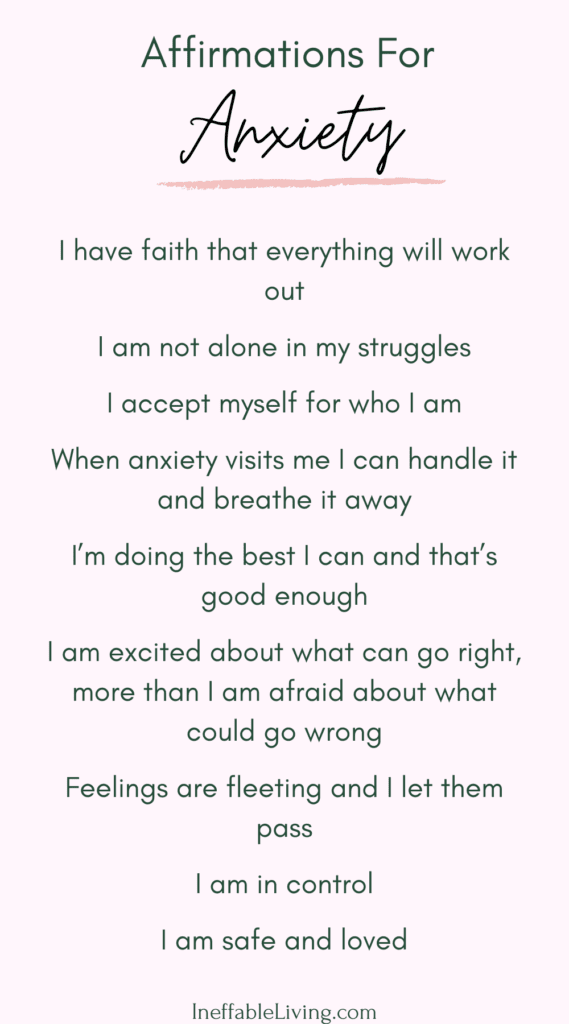
3. Gradual Exposure
How Avoidance Intensifies Your Anxiety?
While escaping an anxiety-provoking situation can provide some relief in the short term, it also sends the message to your mind that you can’t tolerate the situation.
This will in turn intensify your anxiety and may cause you to avoid similar situations in the future. This limits your world as you have to avoid more and more situations.
Stop avoiding and start facing these situations. In other words, act opposite to the urge triggered by your anxiety.

#9. Make An Exposure List
Construct a list of exposure goals by doing the following:
1. Make a list of every single thing you’d have to do if you were to face your fear.
2. Arrange the items beginning with the least feared item at the bottom and ending with the most feared item on the top.
This constitutes your exposure hierarchy. If making this list is causing you some anxiety, remind yourself that you just need to think about facing the least feared item and that you don’t have to worry about the rest.
Besides, the goal is to actually want to invite anxiety into your life, and allow it to stay a while. As you face your fears may discover it’s not as terrifying as you thought.
#10. Face your fears
Start with the first item on your exposure list. Consider adding a few steps if the fear seems too difficult, such as looking at pictures of what you fear, imagining yourself in the feared situation, or talking about your fear with other people.
For example, if you fear flying, your list might look like this:
- Visiting an airport without flying
- Reading about airplane safety
- Talking to people about travel plans
- Going on a short flight with a friend
- Going on a longer flight by myself
When going through exposure process, consider the following:
* Don’t let lots of time go by without taking on another exposure item. Consider taking a step every day if you have the time and it feels okay to you.
* Stay with each step until your anxiety drops a little.
* Allow yourself to feel anxious, knowing that it’ll pass and that you need and want it. Don’t make a complete retreat unless you feel absolutely out of control.
* Try to avoid using crutches, such as alcohol, tranquilizers, distracting yourself with song lyrics, asking someone to reassure you, etc.
These might interfere with the effectiveness of exposure and prevent you from actually facing your fears.
Related: How to Defeat Social Anxiety and Build Confidence?
Bonus Tip. Natural Remedies For Generalized Anxiety Disorder
Natural supplements can be effective in alleviating anxiety.
1. Chamomile
Chamomile used in the form of tea, tablet, or extract can help relieve stress and anxiety.
A 2016 clinical trial investigated the efficacy and safety of chamomile as a long-term treatment for generalized anxiety disorder (GAD).
Results show that taking chamomile helped reduce the severity of anxiety symptoms.
Note: people who experience allergic reactions to plants like ragweed, chrysanthemums, marigolds, and daisies may also experience allergic reactions to chamomile.
Note: Chamomile may interact with certain drugs like warfarin and cyclosporine. If you are taking any type of medication check with your doctor before consuming chamomile teas or supplements.
2. Lavender
Lavender is often used to help calm the nerves and alleviate anxiety.
You can use lavender in the following ways:
- tea
- essential oil in aromatherapy
- mixing the essential oil into a base oil for massage
- adding the oil or flowers to baths
A 2017 review article suggests that chemicals in lavender called linalool and linalyl acetate can have a calming effect on chemical receptors in the brain and constitute an effective short-term treatment for anxiety disorders.
3. Passionflower
Passionflower is shown to be effective in treating restlessness, nervousness, and anxiety.
You can take passionflower in the form of:
- Tea. To make the infusion boil some water with 3 or 4 tablespoons of passion flower and let it simmer for 10 minutes. You can sweeten with a little honey.
- Extract. You can also directly take the liquid (approximately 45 drops of the extract) or, if you prefer, you can dilute it with a little water to lessen the taste.
- Tablets. You can take 1 or 2 times a day.
4. Kava kava
Kava kava, or simply kava, is a shrub that is native to the islands of the Pacific Ocean used to relieve stress and alter mood.
A 2013 placebo-controlled trial investigated the efficacy of kava as a treatment for Generalized Anxiety Disorder.
Participants taking kava showed a significant reduction in anxiety compared with those who received the placebo. The study also found kava to be safe.
Conclusion
The goal here is not to stop thinking anxious thoughts. We need to keep thinking and feeling.
But the goal is to believe less in your thoughts and realize that feeling a bit anxious doesn’t mean that something is wrong with you. The goal is to relate to thoughts and feelings, even the anxious ones, differently.
If you’re still struggling, try out these 10 Powerful Techniques To Control Your Negative Thoughts
FAQ
Can Dehydration Cause Anxiety?
Yes, dehydration can cause anxiety.
When our body is dehydrated, it triggers a stress response that can result in feelings of anxiety or tension.
This happens because dehydration leads to a decrease in blood volume and blood pressure, which can activate the sympathetic nervous system responsible for the “fight or flight” response.
Additionally, dehydration affects the balance of electrolytes in our body, which can lead to increased anxiety levels and other symptoms like headaches, dizziness, and fatigue.
It is important to stay hydrated by drinking enough water to prevent such symptoms.
Is Anxiety Neurodivergent?
Anxiety is not necessarily considered a neurodivergent condition. Neurodivergent conditions are typically those that affect the way the brain works and processes information, such as autism, ADHD, dyslexia, and others.
Anxiety, on the other hand, is a natural response to stress and can affect anyone regardless of their neurology.
However, some neurodivergent individuals may be more prone to anxiety due to their specific challenges and experiences.
How Does Stress Contribute To Anxiety?
Stress can significantly contribute to the development and exacerbation of anxiety.
When individuals experience high levels of stress, their bodies release stress hormones such as cortisol, which activates the body’s “fight-or-flight” response.
While this response is adaptive in short-term situations, chronic stress can lead to prolonged activation of this response, causing disruptions in the body’s stress regulation systems.
Prolonged exposure to stress hormones can impair the functioning of the brain’s prefrontal cortex, which is responsible for regulating emotions and decision-making.
This impairment can make individuals more susceptible to experiencing anxiety symptoms.
Additionally, chronic stress can impact the hippocampus, a region of the brain involved in memory formation and regulation of emotions, leading to further anxiety-related difficulties.
Related: +20 Overgeneralization Examples & How to Avoid It
Is Anxiety A Lifelong Condition?
Anxiety is not always a lifelong condition, although some individuals may experience it chronically.
The duration and course of anxiety disorder can vary from person to person.
For some individuals, anxiety may be situational, triggered by specific events or periods of stress, and may resolve on its own or with appropriate treatment.
Others may experience recurrent episodes of anxiety throughout their lives.
It is important to remember that anxiety disorders are treatable, and many individuals find relief and learn effective coping strategies with therapy and/or medication.
Related: How To Break The Cycle Of Performance Anxiety?
Are There Specific Triggers That Can Worsen Anxiety?
Yes, different triggers can exacerbate anxiety symptoms in individuals.
Triggers can vary depending on the type of anxiety disorder and the individual’s unique circumstances.
Common triggers include:
1. Stressful life events: Major life changes, conflicts, or traumatic experiences can intensify anxiety symptoms.
2. Social situations: Public speaking, social gatherings, or meeting new people can trigger social anxiety.
3. Health concerns: Physical health issues, chronic pain, or illness may increase anxiety levels.
4. Substance use: Certain substances like caffeine, alcohol, or drugs can worsen anxiety symptoms.
5. Time pressures: Excessive workloads, deadlines, or time constraints can contribute to higher anxiety levels.
6. Environmental factors: Loud noises, crowded spaces, or chaotic environments can trigger anxiety.
7. Certain phobias: Specific phobias, such as fear of flying or heights, can cause severe anxiety in relevant situations.
Identifying personal triggers and learning healthy coping strategies to manage anxiety in these situations can be helpful.
Related: Impulsive vs Intrusive Thoughts (& How to Manage Them)
Can Anxiety Lead To Physical Health Problems?
Yes, prolonged and untreated anxiety can have adverse effects on physical health.
Anxiety activates the body’s stress response system, leading to increased heart rate, elevated blood pressure, and rapid breathing.
Over time, chronic anxiety can contribute to the development or worsening of various physical health problems, including:
1. Cardiovascular issues: Long-term anxiety can strain the cardiovascular system, increasing the risk of heart disease, hypertension, and heart attacks.
2. Gastrointestinal problems: Anxiety can disrupt digestion, leading to conditions like irritable bowel syndrome (IBS), stomach ulcers, or acid reflux.
3. Respiratory disorders: Frequent panic attacks or chronic anxiety may result in respiratory problems, such as asthma or shortness of breath.
4. Weakened immune system: Chronic anxiety can suppress the immune system, making individuals more susceptible to infections and illnesses.
5. Sleep disturbances: Anxiety often interferes with sleep patterns, leading to insomnia or inadequate rest, which can negatively impact overall health.
6. Muscle tension and pain: Anxiety-related muscle tension can contribute to chronic pain, headaches, or temporomandibular joint disorder (TMJ).
It is crucial to address anxiety symptoms promptly to prevent potential physical health complications.
Related: Future Tripping: Top 9 Ways to Avoid Future-Tripping
Is It Possible To Outgrow Anxiety?
While it is possible for some individuals to experience a decrease in anxiety symptoms over time, anxiety disorders do not simply vanish without intervention.
As children develop into adolescence and adulthood, they may acquire new coping mechanisms, skills, and tools that allow them to better manage their anxiety.
However, without proper treatment, anxiety symptoms may persist or resurface in different forms.
For some individuals, anxiety symptoms may subside as they enter less stress-inducing life stages or experience significant personal growth.
Moreover, with proper therapy or medication, individuals can learn effective strategies to manage their anxiety more successfully and lead fulfilling lives.
Related: Best 10 Intrusive Thoughts Books
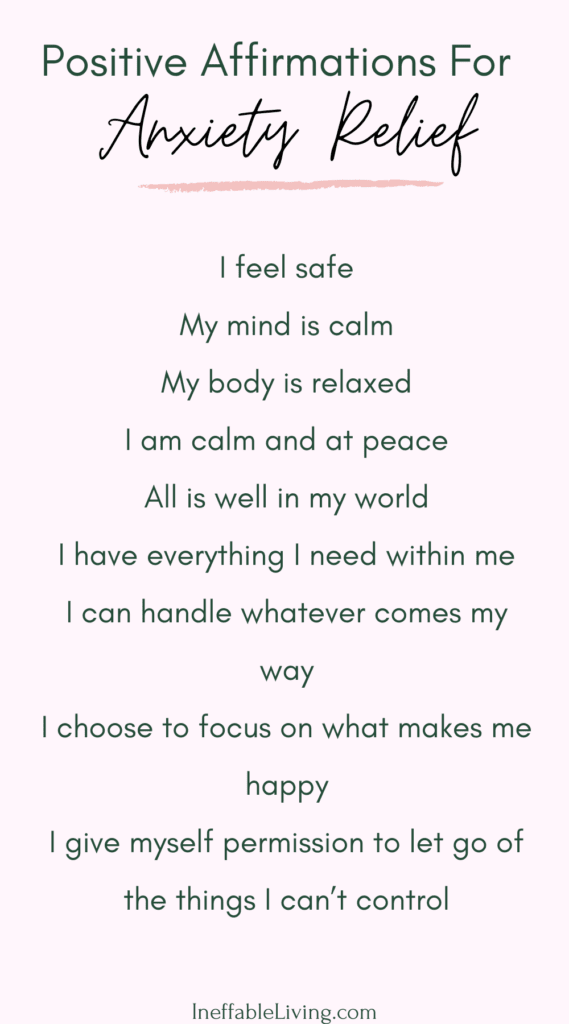
Resources
Portions of this article were adapted from the book Cognitive Behavioral Therapy : The 21 Day CBT Workbook for Overcoming Fear, Anxiety And Depression, © 2019 by Jacob Greene. All rights reserved.
Portions of this article were adapted from the book Overcoming Anxiety for Dummies, © 2002 by Charles H. Elliott and Laura L. Smith. All rights reserved.
- Generalized Anxiety Disorder Study | Center for Psychotherapy Research | Perelman School of Medicine at the University of Pennsylvania (upenn.edu)
- Generalized anxiety disorder: Study looks at heart-brain link (medicalnewstoday.com)
- Generalized Anxiety Disorder – StatPearls – NCBI Bookshelf (nih.gov)
- Worry and Generalized Anxiety Disorder: A Review and Theoretical Synthesis of Evidence on Nature, Etiology, Mechanisms, and Treatment – PMC (nih.gov)
- Generalized Anxiety Disorder (GAD) | Anxiety and Depression Association of America, ADAA
- Generalized anxiety disorder – Symptoms and causes – Mayo Clinic
- Learn More About General Anxiety Disorder (webmd.com)
- NIMH » Generalized Anxiety Disorder: When Worry Gets Out of Control (nih.gov)
- Generalized Anxiety Disorder (GAD): Symptoms and More (healthline.com)
- Overview – Generalised anxiety disorder in adults – NHS (www.nhs.uk)
- Generalized Anxiety Disorder (GAD) | Johns Hopkins Medicine
- Generalized anxiety disorder – Wikipedia
- Generalized Anxiety Disorder (GAD) – HelpGuide.org
